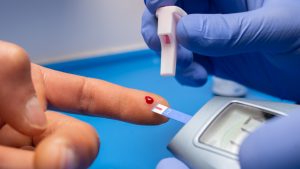Prediabetes is a pivotal moment that presents a wonderful opportunity for positive change. With the right lifestyle adjustments, many individuals can prevent the progression to type 2 diabetes. This blog will explore practical steps you can take to embrace healthier habits and foster a brighter future for your health.
Understanding the Importance of Prevention
Prediabetes is not just a health condition; it’s a signal that it’s time to take charge of your well-being. By recognizing this signal and acting on it, you can transform your health trajectory. The good news is that making small, consistent changes can lead to significant improvements in your overall health and well-being.
Key Lifestyle Changes for Prevention
Adopt a Balanced Diet
- Focus on Whole Foods: Incorporate more fruits, vegetables, whole grains, and lean proteins into your diet. These foods are nutrient-dense and can help stabilize blood sugar levels.
- Watch Portion Sizes: Being mindful of portion sizes can help prevent overeating. Consider using smaller plates and bowls to control portions without feeling deprived.
- Limit Processed Foods and Sugars: Reduce your intake of sugary beverages, snacks, and processed foods. Instead, opt for natural snacks like nuts, yogurt, or fruit.
Stay Active
- Regular Exercise: Aim for at least 150 minutes of moderate-intensity aerobic activity each week, such as brisk walking, cycling, or swimming. Physical activity not only helps manage weight but also improves insulin sensitivity.
- Incorporate Movement into Daily Life: Look for opportunities to move more throughout the day. This could be taking the stairs instead of the elevator, walking during your lunch break, or engaging in active hobbies.
Achieve a Healthy Weight
- Set Realistic Goals: If you’re overweight, aim to lose 5-10% of your body weight. This modest reduction can significantly lower your risk of developing type 2 diabetes.
- Celebrate Small Wins: Every step towards a healthier weight is a victory. Celebrate your achievements and stay motivated by tracking your progress.
Manage Stress Effectively
- Practice Mindfulness: Techniques such as meditation, yoga, or deep-breathing exercises can help you manage stress levels. Reducing stress can positively impact blood sugar control.
- Engage in Enjoyable Activities: Make time for hobbies and activities that bring you joy. This can help reduce stress and improve your overall mood.
Stay Hydrated
- Drink Plenty of Water: Staying hydrated is crucial for overall health. Water is the best choice for hydration, and it can help you feel full, reducing the likelihood of overeating.
Get Regular Check-Ups
- Stay Proactive: Regular health check-ups are essential for monitoring your blood sugar levels and overall health. Discuss your risk factors with your healthcare provider and stay informed about your health status.
Building a Supportive Environment
Creating a supportive environment can enhance your journey toward healthier habits. Here are some strategies to consider:
- Involve Family and Friends: Share your goals with loved ones and encourage them to join you in making healthier choices. This support can boost your motivation and make the process more enjoyable.
- Join Community Programs: Look for local health and wellness programs that focus on diabetes prevention. Participating in group activities can provide motivation and camaraderie.
Conclusion
Preventing the progression from prediabetes to type 2 diabetes is an achievable goal that can lead to a healthier, more vibrant life. By embracing lifestyle changes and prioritizing your health, you’re taking powerful steps toward a brighter future. Remember, every positive change, no matter how small, contributes to your overall well-being.
Encourage your readers to stay informed and motivated on their health journeys. Invite them to follow you for more tips and insights on managing prediabetes and fostering a healthier lifestyle.

Type 2 Diabetes: Is It Really Reversible?
A recent National Geographic article [link] explores how type 2 diabetes could be reversible with the right approaches. This condition, which affects millions of people worldwide, has long been considered a chronic and progressive disease. However, recent research challenges this perception and suggests that with lifestyle changes and the right approach, remission is possible. The

How Do GLP-1 Drugs Compare? A Breakdown of Ozempic, Mounjaro, and Trulicity
GLP-1 receptor agonists have revolutionized diabetes management, with drugs like Ozempic, Mounjaro, and Trulicity leading the market. But how do these medications compare in terms of effectiveness, side effects, and patient outcomes? Let’s explore their differences and what they mean for diabetes patients. Understanding GLP-1 Medications GLP-1 receptor agonists mimic a natural hormone that helps

Why Has Medicare Spending on Diabetes Medications Skyrocketed in 5 Years?
In the past five years, Medicare spending on diabetes medications has increased nearly fivefold, reaching $35.8 billion in 2023. This surge has been primarily driven by the growing use of GLP-1 drugs such as Ozempic, Mounjaro, and Trulicity. But what is behind this cost escalation, and how does it affect patients and the U.S. healthcare

The Gut Microbiota and Blood Sugar Control: A Hidden Connection
The human gut is home to trillions of bacteria that play a crucial role in digestion, immune function, and even metabolism. Recent research has revealed a fascinating link between the gut microbiota and blood sugar regulation, shedding light on how the balance of microbes in our intestines can influence diabetes risk and overall metabolic health.

The Dawn Phenomenon: Why Blood Sugar Rises While You Sleep
For many people with diabetes, waking up with high blood sugar levels can be frustrating—especially if they didn’t eat anything overnight. This early-morning spike in blood glucose is known as the Dawn Phenomenon, and it happens due to natural hormonal changes in the body. But why does it occur, and how can it be managed?

The Influence of Red Light on Blood: Can It Improve Diabetes?
Type 2 diabetes is a metabolic disease characterized by insulin resistance and elevated blood glucose levels. In the search for complementary alternatives to improve glycemic control, red light therapy has gained attention due to its potential to enhance circulation, reduce inflammation, and optimize cellular function. But what does science say about it? ✨ What is

